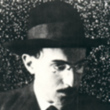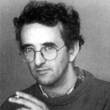Blindness
Description
More Details
9780792756026
9780547537597
9780156007757
Excerpt
Similar Titles From NoveList
Similar Authors From NoveList
Published Reviews
Booklist Review
Less an allegory than a mature writer's inspired characterization of human nature, this book opens with a driver being struck blind at a stoplight. Soon, so are his wife, the doctor who examines him, and the doctor's other patients: a pretty young woman, a worn-out old man, and a young boy. The doctor's wife retains her vision but claims to be blind so she can help the others, but she then has to witness the horrors of blind human nature as the government quarantines them in a mental hospital under armed guard. That cannot stop the disease from spreading, nor does being blind prevent human behavior from expressing itself. As in Golding's Lord of the Flies, a hierarchy of terror arises behind closed doors as more blind arrive. They hoard and share, love and rape, fight and heal. Eventually, the doctor's group escapes and returns to his house, where the world starts to return to normal. Saramago's novel deftly shows how vulnerable humans are, how connected and how blind. --Kevin Grandfield
Publisher's Weekly Review
Brilliant Portuguese fabulist Saramago (The History of the Siege of Lisbon) has never shied away from big game. His previous works have rewritten the history of Portugal, reimagined the life of Christ and remodeled a continent by cleaving the Iberian peninsula from Europe and setting it adrift. Here, Saramago stalks two of our oldest themes in the tale of a plague of blindness that strikes an unnamed European city. At the novel's opening, a driver sits in traffic, waiting for the light to change. By the time it does, his field of vision is white, a "milky sea." One by one, each person the man encountersthe not-so-good Samaritan who drives him home, the man's wife, the ophthalmologist, the patients waiting to see the ophthalmologistis struck blind. Like any inexplicable contagion, this plague of "white sickness" sets off panic. The government interns the blind, as well as those exposed to them, in an abandoned mental hospital guarded by an army with orders to shoot any detainee who tries to escape. Like Camus, to whom he cannot help being compared, Saramago uses the social disintegration of people in extremis as a crucible in which to study the combustion of our vices and virtues. As order at the mental hospital breaks down and the contagion spreads, the depraved overpower the decent. When the hospital is consumed in flames, the fleeing internees find that everyone has gone blind. Sightless people rove in packs, scavenging for food, sleeping wherever they can. Throughout the narrative, one character remains sighted, the ophthalmologist's wife. Claiming to be blind so she may be interned with her husband, she eventually becomes the guide and protector for an improvised family. Indeed, she is the reader's guide and stand-in, the repository of human decency, the hero, if such an elaborate fable can have a hero. Even after so many factual accounts of mass cruelty, this most sophisticated fiction retains its peculiar power to move and persuade. Editor, Drenka Willen. (Sept.) FYI: Paperback editions of The History of the Siege of Lisbon and Baltasar and Blimunda will be issued simultaneously. (c) Copyright PWxyz, LLC. All rights reserved
Library Journal Review
Reminiscent of Albert Camus's The Plague, this provocative allegorical novel by noted Portuguese writer Saramago (Baltasar and Blimunda, LJ 10/1/87) deals with a contagious "white" blindness that spreads very quickly in a large city. Among a small group of people grappling with the horror and chaos, one woman has been spared; she is the reader's eyewitness. In an environment ripe with philosophical implications, only the most fundamental of human needs endures. This unsettling, highly original work is essential for all public and academic libraries that want to challenge their readers. Beautifully written in a concise, haunting prose, it would be an excellent choice for a book-discussion group.Lisa Rohrbaugh, East Palestine Memorial P. L., OH (c) Copyright 2010. Library Journals LLC, a wholly owned subsidiary of Media Source, Inc. No redistribution permitted.
Kirkus Book Review
The embattled relationships among the people of a city mysteriously struck by an epidemic of blindness form the core of this superb novel by the internationally acclaimed Saramago, the Portugese author of, most recently, The History of the Siege of Lisbon (1997). A driver stalled at a busy intersection suddenly suffers an attack of ``white blindness'' (no other color, or any shape, is discernible). The ``false Samaritan'' who helps him home and then steals his car is the next victim. A busy ophthalmologist follows, then two of his patients. And on it goes, until the city's afflicted blind are ``quarantined'' in an unused mental ward; the guards ensuring their incarceration panic and begin to shoot; and a paternalistic ``Ministry'' runs out of strategies to oversee ``an uprooted, exhausted world''in a state of escalating chaos. But then, as abruptly as the catastrophe began, everything changesin a wry denouement suggesting that what weve observed (as it were) amounts to an existential test of these characters' courage and mutual tolerance. But Blindness never feels like a lesson, thanks to Saramago's mastery of plot, urbane narration (complete with irreverent criticisms of its own digressiveness), and resourceful characterizations. All the people are nameless (``the girl with the dark glasses,'' ``the boy with the squint''), but we learn an enormous amount about them, and the central figurethe ophthalmologists wife, who pretends to be blind in order to accompany her husbandis triumphantly employed as both viewpoint character and (as a stunning final irony confirms) ``the leader of the blind.'' Echoes of Orwell's 1984 and images hinting at Holocaust experiences enrich the texture of a brilliant allegory that may be as revolutionary in its own way and time as were, say, The Trial and The Plague in theirs. Another masterpiece.
Booklist Reviews
Less an allegory than a mature writer's inspired characterization of human nature, this book opens with a driver being struck blind at a stoplight. Soon, so are his wife, the doctor who examines him, and the doctor's other patients: a pretty young woman, a worn-out old man, and a young boy. The doctor's wife retains her vision but claims to be blind so she can help the others, but she then has to witness the horrors of blind human nature as the government quarantines them in a mental hospital under armed guard. That cannot stop the disease from spreading, nor does being blind prevent human behavior from expressing itself. As in Golding's Lord of the Flies, a hierarchy of terror arises behind closed doors as more blind arrive. They hoard and share, love and rape, fight and heal. Eventually, the doctor's group escapes and returns to his house, where the world starts to return to normal. Saramago's novel deftly shows how vulnerable humans are, how connected and how blind. ((Reviewed August 1998)) Copyright 2000 Booklist Reviews
Library Journal Reviews
Reminiscent of Albert Camus's The Plague, this provocative allegorical novel by noted Portuguese writer Saramago (Baltasar and Blimunda, LJ 10/1/87) deals with a contagious "white" blindness that spreads very quickly in a large city. Among a small group of people grappling with the horror and chaos, one woman has been spared; she is the reader's eyewitness. In an environment ripe with philosophical implications, only the most fundamental of human needs endures. This unsettling, highly original work is essential for all public and academic libraries that want to challenge their readers. Beautifully written in a concise, haunting prose, it would be an excellent choice for a book-discussion group. Lisa Rohrbaugh, East Palestine Memorial P. L., OH Copyright 1998 Library Journal Reviews
Library Journal Reviews
To describe as allegory this story of unnamed characters in an unnamed city who are struggling with an undiagnosed epidemic of "white blindness" is both too simple and too complex. Beyond any emblematic purpose, the characters act out life with all its paradoxes and hidden truths. Ultimately, the greater meaninghere is the simple story of human frailty and community in the modern world. In searing prose, both complex and minimal, all this and nothing more is revealed. No wonder Saramago won the Nobel prize this year. (LJ 8/98) Copyright 1999 Library Journal Reviews
Publishers Weekly Reviews
Brilliant Portuguese fabulist Saramago (The History of the Siege of Lisbon) has never shied away from big game. His previous works have rewritten the history of Portugal, reimagined the life of Christ and remodeled a continent by cleaving the Iberian peninsula from Europe and setting it adrift. Here, Saramago stalks two of our oldest themes in the tale of a plague of blindness that strikes an unnamed European city. At the novel's opening, a driver sits in traffic, waiting for the light to change. By the time it does, his field of vision is white, a "milky sea." One by one, each person the man encounters the not-so-good Samaritan who drives him home, the man's wife, the ophthalmologist, the patients waiting to see the ophthalmologist is struck blind. Like any inexplicable contagion, this plague of "white sickness" sets off panic. The government interns the blind, as well as those exposed to them, in an abandoned mental hospital guarded by an army with orders to shoot any detainee who tries to escape. Like Camus, to whom he cannot help being compared, Saramago uses the social disintegration of people in extremis as a crucible in which to study the combustion of our vices and virtues. As order at the mental hospital breaks down and the contagion spreads, the depraved overpower the decent. When the hospital is consumed in flames, the fleeing internees find that everyone has gone blind. Sightless people rove in packs, scavenging for food, sleeping wherever they can. Throughout the narrative, one character remains sighted, the ophthalmologist's wife. Claiming to be blind so she may be interned with her husband, she eventually becomes the guide and protector for an improvised family. Indeed, she is the reader's guide and stand-in, the repository of human decency, the hero, if such an elaborate fable can have a hero. Even after so many factual accounts of mass cruelty, this most sophisticated fiction retains its peculiar power to move and persuade. Editor, Drenka Willen. (Sept.) FYI: Paperback editions of The History of the Siege of Lisbon and Baltasar and Blimunda will be issued simultaneously. Copyright 1998 Publishers Weekly Reviews




































